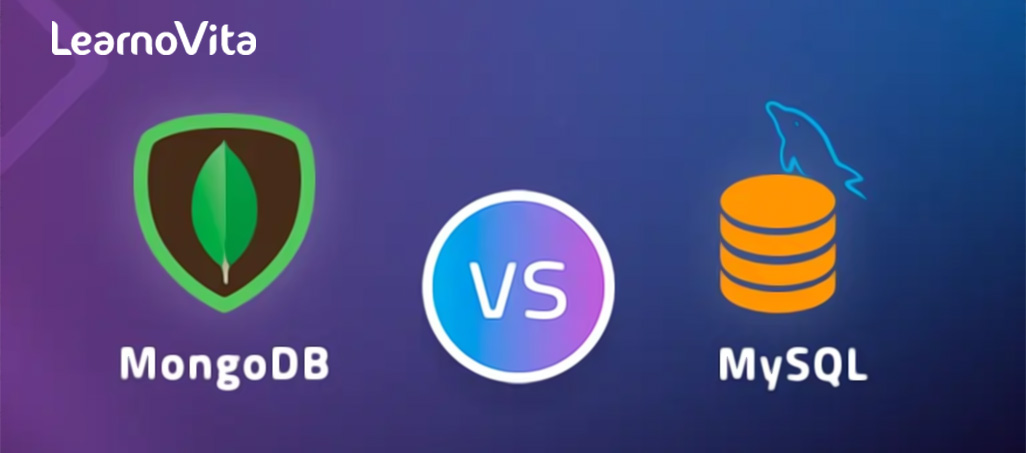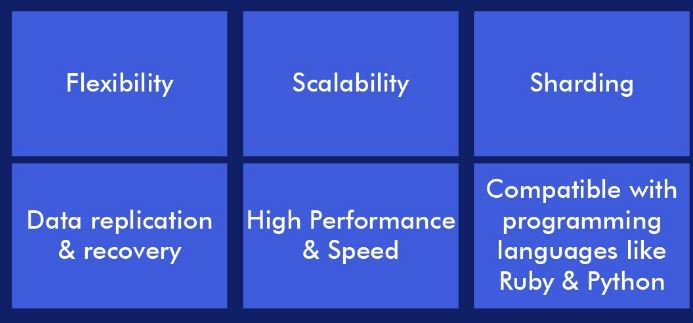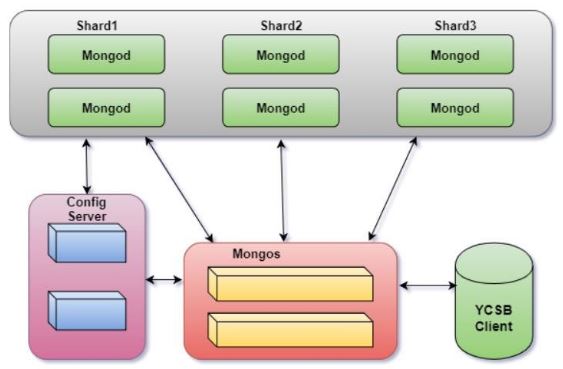- What does the Yield keyword do and How to use Yield in python ? [ OverView ]
- Sorting data in MongoDB ? : A Complete Guide For Beginners [ OverView ]
- What are Data Modelling tools? : The Ultimate Guide
- SQL Server Certification 2016 | A Definitive Guide
- What is Database Administration | Database Management Essentials | A Complete Guide For Beginners
- What is MongoDB and its Queries | All you need to know [ OverView ]
- What is Database Management | Benefits of DBMS | Expert’s Top Picks
- MongoDB Vs MySQL | Know Their Differences and Which Should You Learn?
- MongoDB vs DynamoDB | Know Their Differences and Which Should You Learn?
- MongoDB vs PostgreSQL | Know Their Differences and Which Should You Learn?
- What is a Database? : A Complete Guide with Best Practices
- What is Data Modelling? : All you need to know [ OverView ]
- A Complete Guide on SQL Optimization Techniques
- What is MongoDB Port? : Free Guide Tutorial & REAL-TIME Examples
- What is MongoDB? : A Complete Guide with Best Practices
- What is a Transaction Processing System? REAL-TIME Examples
- MongoDB Commands Cheat Sheet
- How To Become a Data Modeler?
- How To Start a Career in Database Administration?
- Types Of SQL Indexes
- DBMS vs RDBMS vs NoSQL
- Cassandra Vs MongoDB
- Different types of Joins in SQL Server
- What is SSRS?
- Schema in SQL
- What does the Yield keyword do and How to use Yield in python ? [ OverView ]
- Sorting data in MongoDB ? : A Complete Guide For Beginners [ OverView ]
- What are Data Modelling tools? : The Ultimate Guide
- SQL Server Certification 2016 | A Definitive Guide
- What is Database Administration | Database Management Essentials | A Complete Guide For Beginners
- What is MongoDB and its Queries | All you need to know [ OverView ]
- What is Database Management | Benefits of DBMS | Expert’s Top Picks
- MongoDB Vs MySQL | Know Their Differences and Which Should You Learn?
- MongoDB vs DynamoDB | Know Their Differences and Which Should You Learn?
- MongoDB vs PostgreSQL | Know Their Differences and Which Should You Learn?
- What is a Database? : A Complete Guide with Best Practices
- What is Data Modelling? : All you need to know [ OverView ]
- A Complete Guide on SQL Optimization Techniques
- What is MongoDB Port? : Free Guide Tutorial & REAL-TIME Examples
- What is MongoDB? : A Complete Guide with Best Practices
- What is a Transaction Processing System? REAL-TIME Examples
- MongoDB Commands Cheat Sheet
- How To Become a Data Modeler?
- How To Start a Career in Database Administration?
- Types Of SQL Indexes
- DBMS vs RDBMS vs NoSQL
- Cassandra Vs MongoDB
- Different types of Joins in SQL Server
- What is SSRS?
- Schema in SQL

MongoDB Vs MySQL | Know Their Differences and Which Should You Learn?
Last updated on 03rd Nov 2022, Artciles, Blog, Database
- In this article you will get
- 1.What’s MongoDB?
- 2.MongoDB Features
- 3.Key Components of MongoDB Architecture
- 4.Why Use MongoDB?
- 5.What’s MongoDB Query?
- 6.MongoDB pros and cons
- 7.Conclusion
What’s MongoDB?
MongoDB is a document-aware NoSQL database used for high volume data storage. Documents correspond to crucial- value dyads which are the introductory unit of data in MongoDB. Collections contain sets of documents and functions that are original to relational database tables.
MongoDB Features
The document structure is harmonious with how inventors make their classes and objects in their separate programming languages. Developers will frequently say that their classes aren’t rows and columns, but a clear structure with crucial- value dyads.
Rows( or Documents called in MongoDB) don’t need a schema formerly defined. rather, granges can be created on the cover.
The data model available within MongoDB allows you to more fluently represent hierarchical connections, store arrays, and other more complex structures. Scalability – The MongoDB terrain is veritably scalable. Companies around the world have defined clusters, some of which are running 100 bumps with nearly millions of documents in the database.
MongoDB illustration:
The illustration below shows how a document can be modeled in MongoDB.
The id field is added by MongoDB to uniquely identify the document in the collection.
What you may note is that the order data( Order ID, Product and volume) that would typically be stored in a RDBMS would be stored in a separate table, whereas in MongoDB it would actually be stored as an embedded document in the collection. One of the crucial differences is how data is modeled in MongoDB.

Key Components of MongoDB architecture
Below are some common terms used in MongoDB, id – This is a required field in every MongoDB document.The id field is like the primary key of the document.However, MongoDB will automatically produce the field, If you produce a new document without the id field. So for illustration, if we look at the illustration of the guests table above, MongoDB will add a 24 number unique identifier to each document in the collection.
- Id CustomerID CustomerName OrderID
- 563479cc8a8a4246bd27d784 11 thur99 111
- 563479cc7a8a4246bd47d784 22 Trevor Smith 222
- 563479cc9a8a4246bd57d784 33 nicole 333
A collection is original to a table that’s created in another RDBMS similar as Oracle or MS SQL. A collection exists within a database. As can be seen from the preface, collections don’t apply any kind of structure.
The customer can reiterate through a cursor to get the result.
Database : It’s a vessel for collections like RDBMS in that it’s a vessel for tables. Each database gets its own set of lines on the train system. A MongoDB garçon can store multiple databases.
Documents : A record in a MongoDB collection is principally called a document.
Field : A name value brace in a document. A document has zero or further fields.The following illustration shows an illustration of a field containing crucial value dyads. So in the illustration below CustomerID and 11 are one of the crucial value dyads defined in the document.
It’s a mortal: Readable, plain textbook format for expressing structured data. JSON is presently supported in numerous programming languages.
Just a quick note on the main difference between the id field and the normal collection field.
Why Use MongoDB?
Document : Since MongoDB is a NoSQL type of database, rather than keeping the data in a relational type of format, it stores the data in documents. This makes MongoDB veritably flexible and adaptable to real business world situations and conditions.
Ad- hoc queries : MongoDB supports hunt by field, range queries and regular expression quests.
Indexing : Indicators can be created to ameliorate the performance of quests within MongoDB.
Replication : MongoDB can give a high vacuum with replica sets. A replica set consists of two or further MongoDB cases.The primary replica is the main garçon that interacts with the customer and performs all read/ write operations. Secondary clones maintain a dupe of the primary’s data using the beginning replication.
Cargo Balancing : MongoDB uses the conception of sharding to gauge horizontally by unyoking the data across multiple MongoDB cases. MongoDB can run on multiple waiters, balancing cargo and/ or indistinguishable data to keep the system up and running in case of tackle failure.

What’s MongoDB Query?
MongoDB queries give simplicity in the process of getting data from a database, it’s analogous to SQL query in SQL database language.
Library papers:
Note then the “ enough() ” query system is used only for better readability of the document database.
- The discovery() system displays the database collection in anon-structured form({}), which contains the{$ eq{$ gte{$ lte{$
- exists}},{}})})
- illustration
- ({$ and({ position{$ eq ” high ”}},{ position{$ exists “ true ”}})}). enough()
- In this query illustration we’re using the AND driver and given two conditions which are stressed as follows
- additional driver{$ and( first condition, alternate condition)}
- first condition( position == “ high ”){ position{$ eq “ high ”}}
- Alternate condition{ position{$ exists “ true ”}}
Querying MongoDB Collection:
MongoDB Query Language( MQL) uses a syntax analogous to documents, making it intuitive and easy to use for advanced queries. Let’s look at some MongoDB query examples.
Search a limited number of results.
- db.users.find(). limit( 10)
- Search druggies by family name
- db.users.find({ “name.family ”” Smith ”}). computation()
- 1
- Note that we enclose “name.family ” in quotations, because it has a fleck in the middle.
- query document by numeric range
- / All posts with a “ Like ” field with further than one numeric value
- db.post.find({ likes{$ gt 1}})
- / All posts with 0 likes
- db.post.find({ likes0})
- / All posts that do n’t have exactly 1 like
- db.post.find({ likes{$ ne 1}})
- kind results by a field
- / kind by age, in thrusting order( lowest value first)
- >db.user.find(). sort({ age 1})
- “ name ”{ given “ Alex ”, family “ Smith ”},
- “ dispatch ” “email@example.com ”,
- “ age ” 27
- ,
- , id object id( “ 5effaa5662679b5af2c58829 ”),
- Dispatch “email@example.com ”,
- name{ given “ Jesse ”, family “ Jio ”},
- Age 31
- ,
- // kind by age, in descending order( largest value first)
- >db.user.find(). sort({ age- 1})
- , id object id( “ 5effaa5662679b5af2c58829 ”),
- Dispatch “email@example.com ”,
- name{ given “ Jesse ”, family “ Jio ”},
- Age 31
- ,
- “ dispatch ” “email@example.com ”,
- “ age ” 27
- ,
Managing indicators:
MongoDB allows you to produce indicators, indeed on nested fields in subdocuments, to make queries perform well, indeed when the collection is huge.
- produce an indicator
- db.user.createIndex({ “name.family ” 1})
- produce a unique indicator
- db.user.createIndex({ dispatch 1},{ unique true})
- Unique indicators allow you to ensure that there’s at most one record in the collection with a given value for that field – veritably useful with effects like dispatch addresses!
- View indicator on collection
- db.user.getIndexes()
- ,
- “ V ” 2,
- “ key ”{
- “, id ” 1
- “ name ” “, id, ”,
- “ ns ” “my_database. stoner ”
- ,
- “ V ” 2,
- “ key ”{
- “ name given ” 1
- “ name ” “name.given_1 ”,
- “ ns ” “my_database. stoner ”
- ,
- Note that by dereliction for easy document reclamation by primary key, the collection always has an indicator on the id field, so any fresh indicators after that will be listed. drop an indicator
- db.user.dropIndex( “name.given_1 ”)
MongoDB pros and cons
Like other NoSQL databases, MongoDB doesn’t bear a predefined schema. It stores any type of data. It lets druggies produce any number of fields in a document, making MongoDB databases easier to gauge than relational databases.
One of the benefits of using documents is that these objects collude to native data types in numerous programming languages.One of the main features of MongoDB is its vertical scalability, which makes it a useful database for companies running big data operations.Newer performances of MongoDB also support the creation of fields of data grounded on a sharded key.MongoDB supports multiple storehouse machines and provides a pluggable storehouse machine API that allows third parties to develop their own storehouse machines for MongoDB.
The DBMS also has erected- in aggregation capabilities, which allow druggies to run MapReduce law directly on the database rather than running MapReduce on Hadoop. MongoDB also includes its own train system called GridFS, analogous to Hadoop Distributed train System( HDFS). The train system is primarily used for storing lines larger than BSON’s size limit of 16 MB per document. These parallels allow MongoDB to be used rather than Hadoop, although the database software integrates with Hadoop, Spark, and other data processing fabrics.
Although MongoDB has some precious advantages, it also has some disadvantages. With its automatic failover strategy, the stoner sets up only one master knot in the MongoDBcluster.However, the alternate knot will be automatically converted to the new master, If the master fails. This switch promises durability, but it’s not immediate – it can take up to a nanosecond. By comparison, Cassandra NoSQL databases support multiple master bumps so that if one master goes down, the other daisies in for the largely available database structure.
Another implicit problem is that MongoDB doesn’t give full referential integrity through the use of foreign- crucial constraints, which can affect data thickness. In addition, stoner authentication isn’t enabled by dereliction in the MongoDB database, a nod to the technology’s fashionability with inventors. Still, vicious hackers have targeted a large number of vulnerable MongoDB systems in rescue attacks, adding a dereliction setting that blocks network connections to databases if they’ve not been configured by the database director.
Conclusion
MongoDB is a tool that can manage document- acquainted information, store or recoup information.MongoDB supports different forms of data. It’s one of several non-relational database technologies that began under the NoSQL banner in the mid-2000s – in general, for use in big data operations and other processing tasks involving data that do well in a rigid relational model. Does n’t fit well. rather of using tables and rows as in a relational database, the MongoDB armature is composed of collections and documents.
Organizations can use MongoDB for their ad- hoc queries, indexing, cargo balancing, aggregation, garçon- side JavaScript prosecution, and other features. The ultimate inflexibility of MongoDB means that it’s far from a comprehensive list of everything you can do with it! For further information, see the MongoDB attestation, or take a course at MongoDB University.
